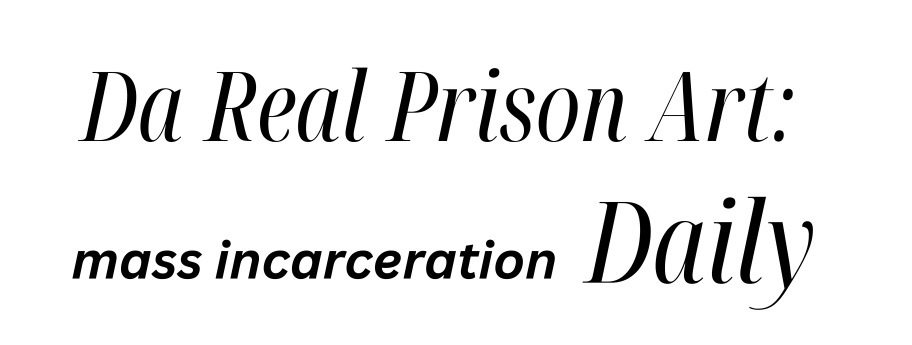
The 13th Amendment of the United States Constitution abolished slavery and involuntary servitude—except as punishment for a crime. This so-called “Except Clause” has long been used to justify forced labor in federal and state prison systems.
Asst. Prof. of Law Adam A. Davidson, JD’17, challenges this interpretation.
“I can recall no sentence hearing, brief or appellate record that has mentioned slavery or involuntary servitude as punishment,” he said.
This absence of direct acknowledgment has resulted in what Davidson calls “administrative enslavement,” a system in which incarcerated people are forced to work under harsh conditions and for meager wages, without any explicit designation that their sentence includes enslavement. Davidson explored this issue in depth in his 2024 paper, “Administrative Enslavement,” published in the Columbia Law Review.
“It’s my attempt to understand how this state of the law came to be,” he said.
Davidson’s scholarship focuses on the intersection of race and the criminal justice system.
“At my core, I’m motivated by the desire to figure out how the systems that create and maintain race, racial hierarchy and our criminal legal systems work, and why those systems operate as they do,” he said.
Through his paper, Davidson brought to light an issue that has received little attention and criticism in courts, partly because forced labor has long been tied to incarceration and courts are generally unwilling to question the operation of prisons. His research reveals that in practice, forced labor continues in prisons not as a form of punishment, but as a function of administrative decision-making.
“I’m not the first person to identify this issue,” he said. “But my paper really investigated how the law has implemented this supposed punishment. I found all kinds of allusions to prison labor as punishment, but the cases or statutes or regulations that tie it to punishment are just absent.”
‘It’s not modern-day slavery—it’s slavery’
In recent years, incarcerated people and reform activists together have increasingly drawn attention to this issue.
One formerly incarcerated person put it bluntly: “It’s not modern-day slavery—it’s slavery.” Last year, social activists and researchers from New York University published a book called Abolition Labor: The Fight to End Prison Slavery, which documents the lived experiences of prisoners subjected to forced labor.
Davidson sees this grassroots movement as a key driver of change.
“Non-lawyers do have the power to effectuate change—that political power-building is oftentimes what leads to legal change and not the other way around,” he said. “Now, we are at the stage of this anti-slavery movement where the lawyers are coming in to formalize the changes legally.”
While the 13th Amendment does not extend labor protections to incarcerated individuals, the constitutions of some states now do. In response to ongoing inmate complaints, Colorado in 2018 passed a constitutional amendment that dropped the Except Clause, officially banning slavery and involuntary servitude in its entirety.
This amendment has been interpreted to ban prisons from punishing prisoners with practices such as solitary confinement, if they refused to work. Alabama followed suit in 2022. Currently, anti-slavery amendments are pending in Nevada and California.
To document these developments, Davidson is working on a follow-up paper titled “No Exceptions,” which will be published in the University of Chicago Law Review later this year.
“After Colorado passed its constitutional amendment, nothing actually changed,” said Davidson. “So, the big question for me was, why did nothing change after you changed your constitution?”
The reality of prison labor and the path forward
The new paper examines these attempted reforms to better understand how the law can drive real improvements. Davidson is also collecting first-hand accounts from incarcerated people to “document the reality” of prison slavery.
He noted that many have expressed a humanitarian perspective on their own desire to change the system.
“There are real dignitary harms from saying ‘you are legally enslaved’ or ‘you are legally in involuntary servitude’,” explained Davidson. “Taking away just the legal label can have real benefits. Of course, a lot of people want to go further than that, but at the core, people in prison want to be recognized as human beings with dignity.”
Davidson envisions a system where prison labor mirrors real-world employment, with fair wages, safe conditions and genuine opportunities for rehabilitation.
“What I think most people don’t realize is that incarcerated individuals do want to work,” he said. “They just want to work in ways that are dignified and in conditions that are at least tolerable. One study showed that the average wage of a prison worker is between ten and forty cents an hour.”
He also points to broader economic detriments. Family members often send money to support loved ones in prison, straining already-limited finances. Poor-quality food in prison can also cause health issues that lead in turn to higher costs.
“It’s a domino effect,” said Davidson. “If all of a sudden those communities aren’t being financially drained because the person is working and they’re getting a real hourly wage, that could have real societal benefits.”
One example of incarcerated people taking great pride in their work even in the face of real danger is California’s incarcerated firefighters’ program, which allows eligible prisoners to train and work as firefighters. Their wages are less than a dollar per hour and they face increased injury risks compared to non-incarcerated firefighters. But they gain skills, experience and a sense of purpose—some have reported it to be life-changing—and can later apply for firefighting jobs upon release.
“What happens in prison doesn’t stay in prison,” said Davidson. “The fact is an overwhelming number of people who are incarcerated will be released and are going to be a part of society. The question is, what are prisons doing that will either help them be better or worse when they are released?”
According to Davidson, if courts are willing to robustly interpret these state constitutional amendments, it could provide a proof of concept for what prison labor could look like.
“I think it would look much more rehabilitative,” he said, “which would be transformative not just for prisoners—but for everyone in society.”
—Adapted from an article first published by the University of Chicago Law School.
This post was originally published on this site be sure to check out more of their content.









